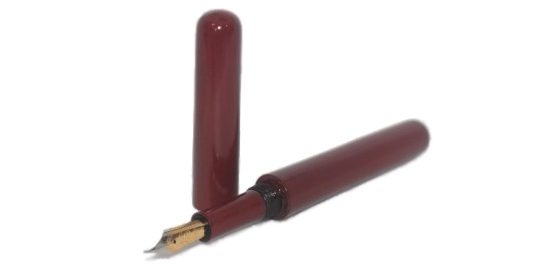We catch up with up-and-coming urushi master, Ruth Bolton…

Tell us about Shibui! It’s a tricky term to translate into English, but can mean the way that objects obtain an accidental beauty over time; it’s random, so it’s unique, and improves as it gets older. The ‘north’ bit of the name is because I’m based in sunny Tyneside.

So how did you end up getting into the ancient art of urushi? It wasn’t planned, but I lived in Japan for six years and in an attempt to learn the language I thought I’d give night classes a try. Getting to grips with urushi varnishing techniques looked like a good way to go in at the deep end, and one thing led to another.

Was it about pens right from the start? Not really – that was another benign accident! I inherited a lathe from my grandfather, and although turning wood was hard work I found I got on very well with ebonite. It’s smelly stuff to work with, but the results are worth it. Then, having seen urushi-finished pens in Japan, I put two and two together. It’s been a busy time ever since…

How complex is the process? Very! Turning the pen in ebonite is one of the fastest parts , really – that and adding a Bock nib at the end. But urushi is all about the finish, and that can take up to fifty coats for each piece. The coats have to dry slowly, in a humid atmosphere to avoid cracking; I use an old cigar humidor to regulate that, but it can still take up to three months overall.

What’s next? More textures and finishes. My urushi designs are selling well through Kickstarter, I’m working on a shark-skin texture next, and prototyping a maki-e finish too. It’s a long learning process, but a fascinating one. It’s amazing the things that can make the key difference, too – I’m using a sea sponge to create the coral negoro effect of my latest design.

You can see more of Ruth’s remarkable designs on her Instagram page, and we’re planning to put one of her pens through the legendary United Inkdom meta-review process later in the year.
